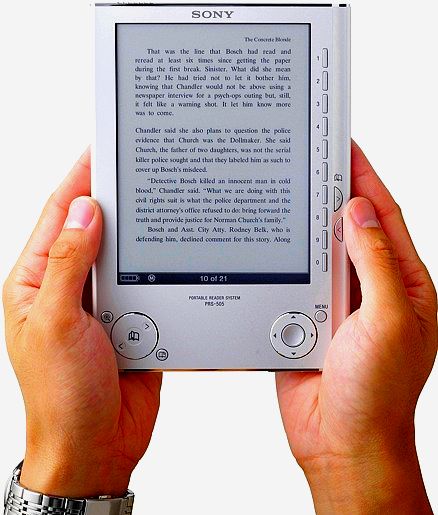At the HighWire Publisher meeting in California this week, a number of key trends in research behaviour were revealed. The Libraries and Academic Research division of Stanford University has carried out 45 interviews to ascertain the information-seeking behaviours of its own researchers, with some enlightening results.
 General patterns of behaviour
General patterns of behaviour
Many respondents described using “more automated” alerts to stay up-to-date with new material in their field of study. Some reported reading 5-10 journals per week. However, what is interesting is that users defined ‘reading a journal’ as simply browsing through an electronic table of contents or email alert, rather than scanning it from cover to cover. On these eTOCs, researchers would like to see greater annotation. Ideally, they pointed to the inclusion of ‘take home messages’ for each article, so that they might ascertain the suitability of the article to their needs before clicking through to the abstract.
“I don’t review journals, I search databases”. Researchers admitted to only swatting up on the current literature in their field when writing a specific paper or applying for a grant. Research is therefore often driven by necessity and not habit. “I read for a purpose, always with a goal”. This means that users are often missing out on discovery, browsing and serendipitous findings when working in online environments. Interviewees also felt that online journals were missing thematic connections. They reported that whilst these used to be present in print journals through editorial curation, the same context was not usually available through online journal sites.
Context
Context is key and was enthusiastically advocated as one of the major benefits of researching within an online environment. During a panel session at the conference, one researcher suggested that articles should be viewed as portals to greater information rather than the end product. The respondents would like to see more ‘similar articles’ and recommendations on particular topics, instead of browsing archives by issue or year, which would be an obvious benefit of semantic technology.
Annotation tools
Another panel member at the conference who participated in the study, argued that highlighting and annotating tools are imperative for researchers online and need to be as easy to use as in print. A great deal of time and effort is wasted on keeping track of what a researcher has read rather than exploring the subject matter. This process is multi-level, piecemeal and often involves individual systems with no interoperability. Kindle was offered as a solution to this problem. Not only can users add comments and highlighting to articles and ebooks, but they can then log-in to their account and pull off all of these notes into one central document. The device can also be used to see which sections of text other users are focusing on.

Discovery tools
PubMed was listed as the top discovery tool of choice. The second most popular was Web of Science, followed by Google Scholar (mentioned by a third of respondents), Wikipedia (to obtain initial overviews of new topics) and Google. One interviewee confided that they, “use Google to vacuum around the edges of the carpet”. Most databases only contain formal articles but researchers are sometimes eager to find additional context, and that is where Google comes into play.
Reading patterns
Unsurprisingly, there is a common tendency to print the PDF of an article when reading in-depth. On-screen reading is associated with retrieving snippets of information and following links, but many prefer to read significant chunks of text offline. Abstracts, figures, introductions, conclusions and subheadings were all identified as skimmers’ touchpoints. Supplemental data was regarded as important but inconvenient due to it’s fragmented and inconsistent nature. Some publishers, such as The Journal of Neuroscience, are getting rid of supplemental material completely. Their thinking is that if a figure is essential to the article body, it should embedded within the text and not tagged onto the side as an afterthought.
Conclusions
The researchers in this study were conservative towards change. They were only interested in new concepts that could significantly increase their productivity. HighWire highlighted a number of key areas for journal publishers to focus on:
- Facilitate selection of what to read
- Information extraction and skimming
- Supplemental data management
- Portable annotation
- Integrated literature management
Publishers should be working with the tools researchers are using externally. To be in a position to fully achieve this, we should be investing more time in semantic technologies and initiatives such as data mining and linked data. The study is not yet complete so watch this space for updates in the coming year.


 General patterns of behaviour
General patterns of behaviour

 There were also a number of sessions focusing on eBooks and the information-seeking behaviour of researchers. HighWire have conducted significant research into this established area of ePublishing. In a survey of 139 librarians, most reported an expectation of significant growth in eBook acquisitions in the next 5 years. Users were found to like simplicity, ease-of-use and perpetual access but many disliked issues related to Digital Rights Management (DRM). Other findings from researcher interviews suggested that all disciplines would like to see article/book recommendations based on their own browsing history and bookmarks (similar to amazon). Also of interest was software which would enable them to add electronic notes and highlighting to articles, and could be easily transferred into other applications such as EndNote.
There were also a number of sessions focusing on eBooks and the information-seeking behaviour of researchers. HighWire have conducted significant research into this established area of ePublishing. In a survey of 139 librarians, most reported an expectation of significant growth in eBook acquisitions in the next 5 years. Users were found to like simplicity, ease-of-use and perpetual access but many disliked issues related to Digital Rights Management (DRM). Other findings from researcher interviews suggested that all disciplines would like to see article/book recommendations based on their own browsing history and bookmarks (similar to amazon). Also of interest was software which would enable them to add electronic notes and highlighting to articles, and could be easily transferred into other applications such as EndNote.